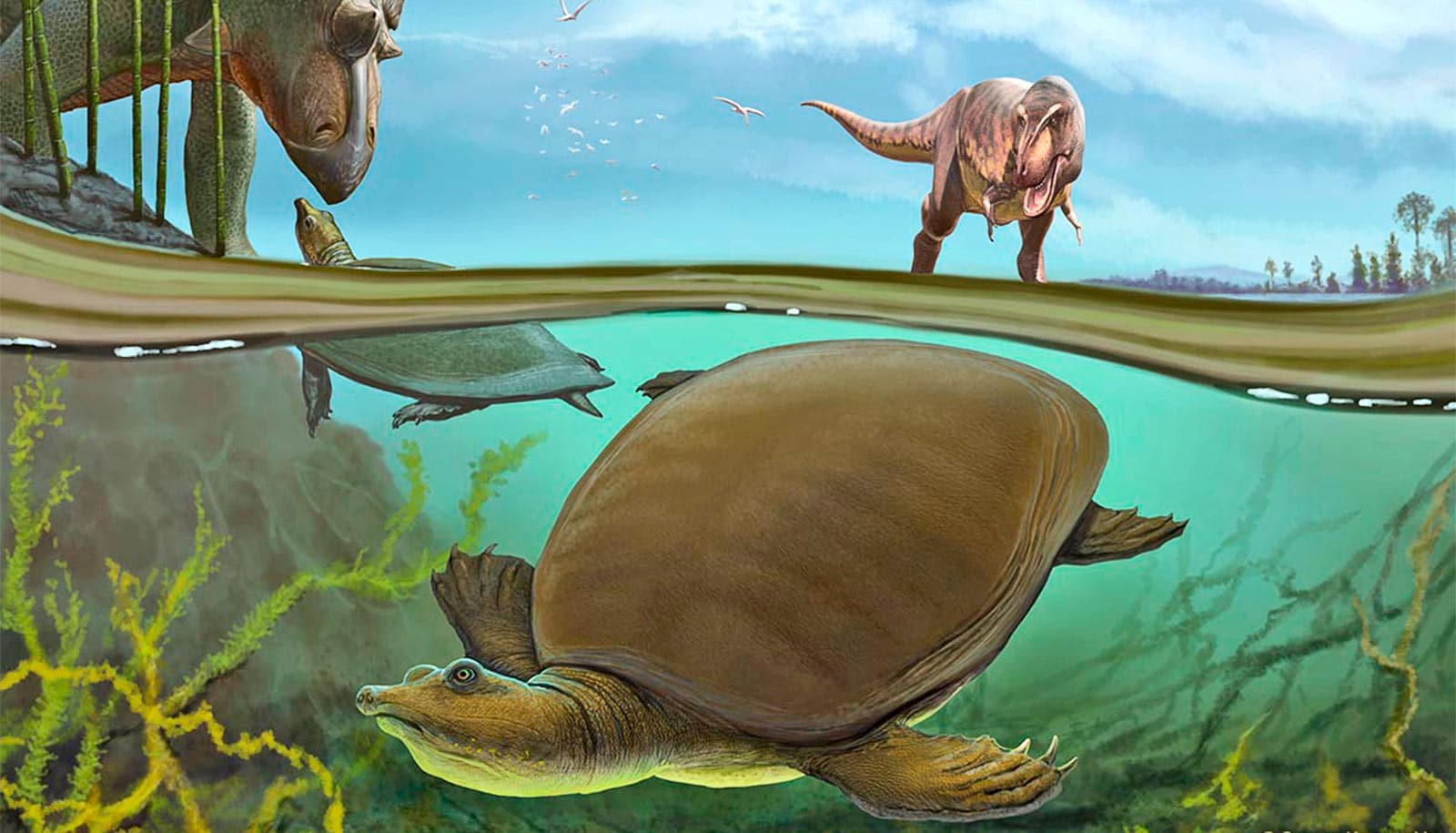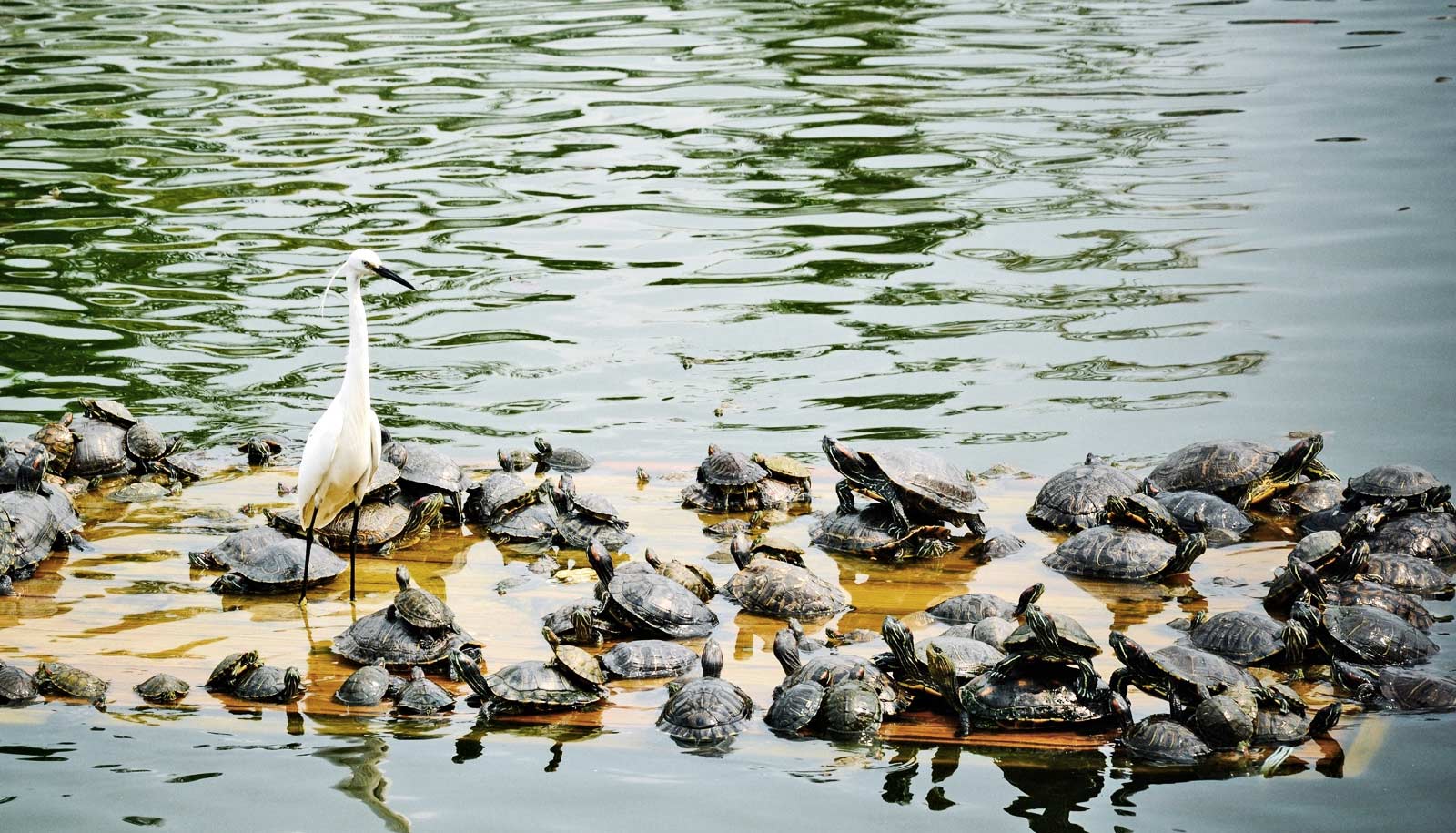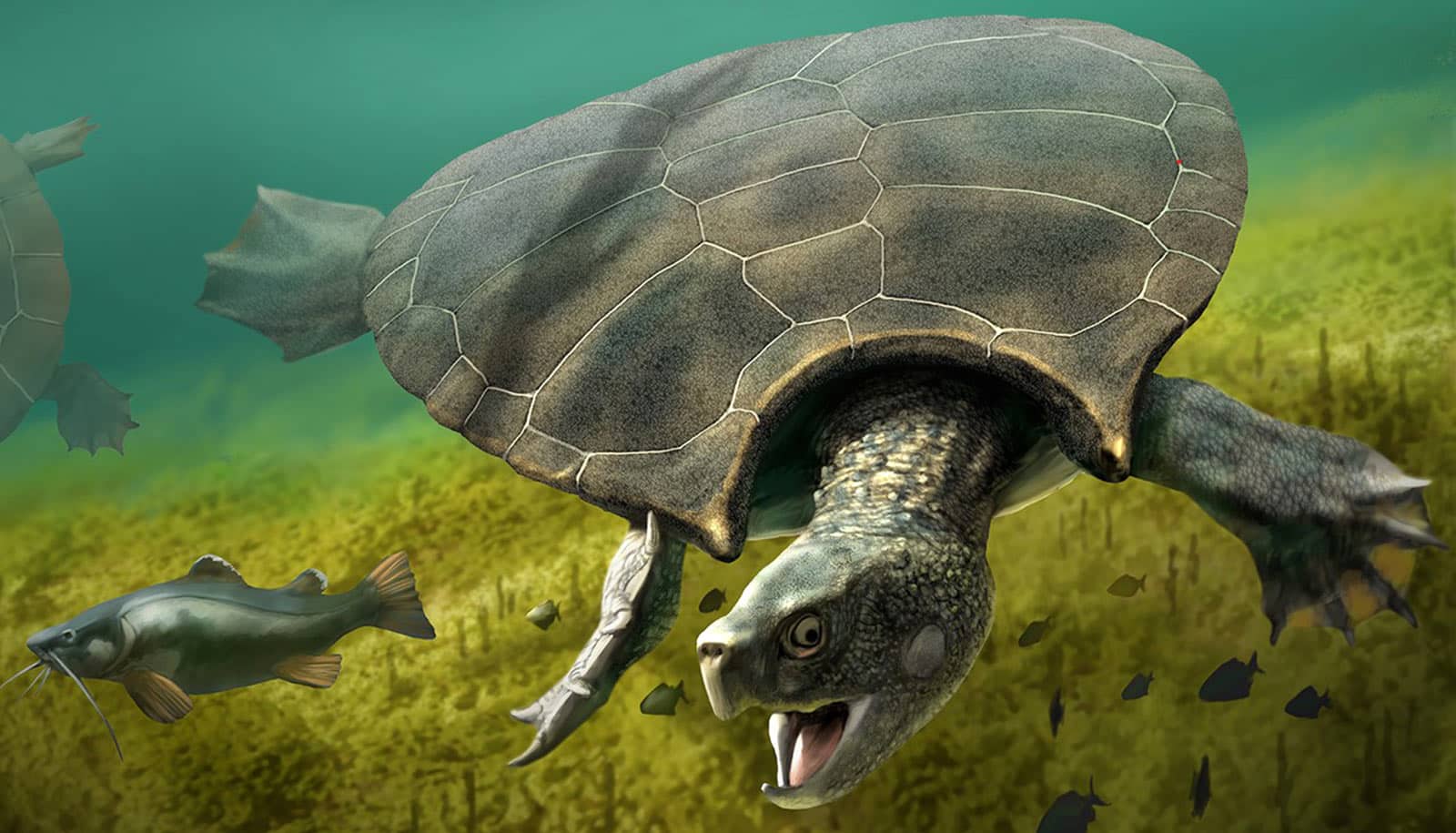A softshell turtle that lived in North Dakota 66.5 million years ago at the end of the Cretaceous Period, just before the mass extinction, is one of the earliest known species of the genus, new research shows.
Hutchemys walkerorum lived during a period when large and well-known dinosaurs also roamed Earth, including Tyrannosaurus rex and Triceratops. The find adds important information to scientists’ understanding of softshell turtles more broadly, including the potential effects of the end-Cretaceous mass extinction, which took place in this same time period, on their evolution.
Hutchemys walkerorum belongs to a particular group of softshell turtles in the Trionychidae family called plastomenines. These turtles are similar to the softshell turtles that exist today, although the plastron of plastomenine turtles—the bones covering their stomach and abdominal area—are more strongly sutured together and are often larger and more robust than in other softshell turtles.
Softshell turtle evolution
Plastomenines lived during the Cretaceous and Paleogene periods, around 80 million to 50 million years ago. Members of this group first appear in the fossil record during the Late Cretaceous, and a single species continues into the Eocene Epoch, 50 million years ago, but they are at their peak diversity before and after the Cretaceous-Paleogene boundary.
“Until recently we didn’t understand these softshell turtles very well,” says Steven Jasinski, who recently completed his PhD in the earth and environmental sciences department and lead the research, collaborating with advisor Peter Dodson of the School of Veterinary Medicine at Penn. “However, we are starting to get more information on this extinct group of turtles and further understanding their evolution, including how they dealt with the mass extinction.”
“The mighty dinosaurs fell, and the lowly turtle survived.”
Researchers discovered the fossil specimen of the new species, a partial carapace—the bones that cover the back and what people think of as a turtle’s “shell”—in 1975 in southwestern North Dakota. A field crew from Appalachian State University led by Frank K. McKinney and John E. Callahan collected the specimen, along with a specimen of Triceratops, that summer.
The fossil turtle specimen remained at Appalachian State until 2013, when Andrew Heckert of Appalachian State discussed it with Jasinski, a master’s student at East Tennessee State University at the time.
Winners and losers during the Age of Dinosaurs
Research started in earnest around that time and continued when Jasinski was at Penn for his doctoral studies. Based on the structure of the specimen, he and colleagues determined this fossil belonged to a genus of turtles from the American West known as Hutchemys. Hutchemys walkerorum represents one of the rare occurrences of these turtles prior to the mass extinction event that brought the Age of Dinosaurs to an end. It also represents the easternmost occurrence of the genus during the Cretaceous Period.
“With this study we gain further insight into winners and losers during the cataclysm that ended the Age of Dinosaurs,” says Dodson. “The mighty dinosaurs fell, and the lowly turtle survived.”
A phylogenetic analysis, comparing the new species with other known trionychids, or softshell turtles, gave the scientists a better understanding of the group’s evolutionary relationships. Their analysis placed Hutchemys walkerorum with other known species of Hutchemys and several other turtles in a distinct group of derived plastomenines, which they named Plastomenini.
In addition, the researchers found a group of early trionychids, placing them in a newly established subfamily, Kuhnemydinae. Kuhnemydines are fossil species from Asia, and the team’s analysis suggests the family Trionychidae originated in Asia before migrating to North America sometime in the Late Cretaceous.
The researchers’ investigations also led them to another new classification in the Trionychidae family, a subfamily they named Chitrainae. This group encompasses modern softshell turtles, including the narrow-headed and giant softshell turtles found in southern Asia.
The study is published in Cretaceous Research. The species name walkerorum honors Greg and Susan Walker, whose philanthropy created The Greg and Susan Walker Endowment in 2006. Additional coauthors are from Appalachian State University, the New Mexico Museum of Natural History and Science, and Penn.
Source: Penn


